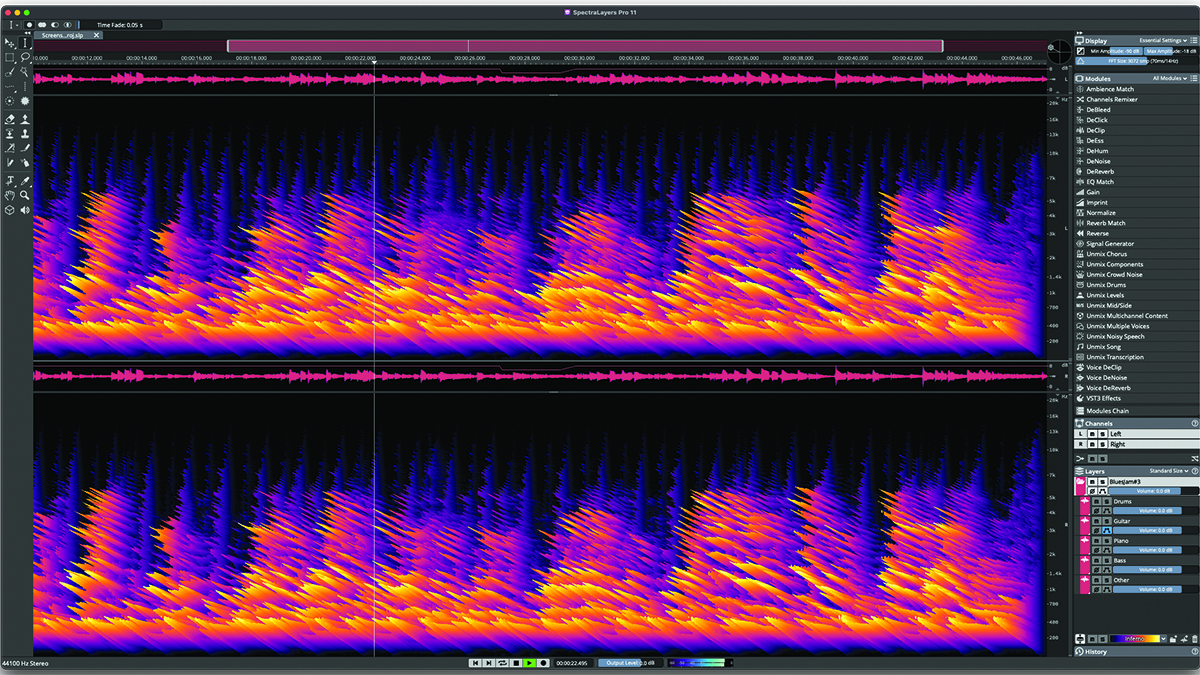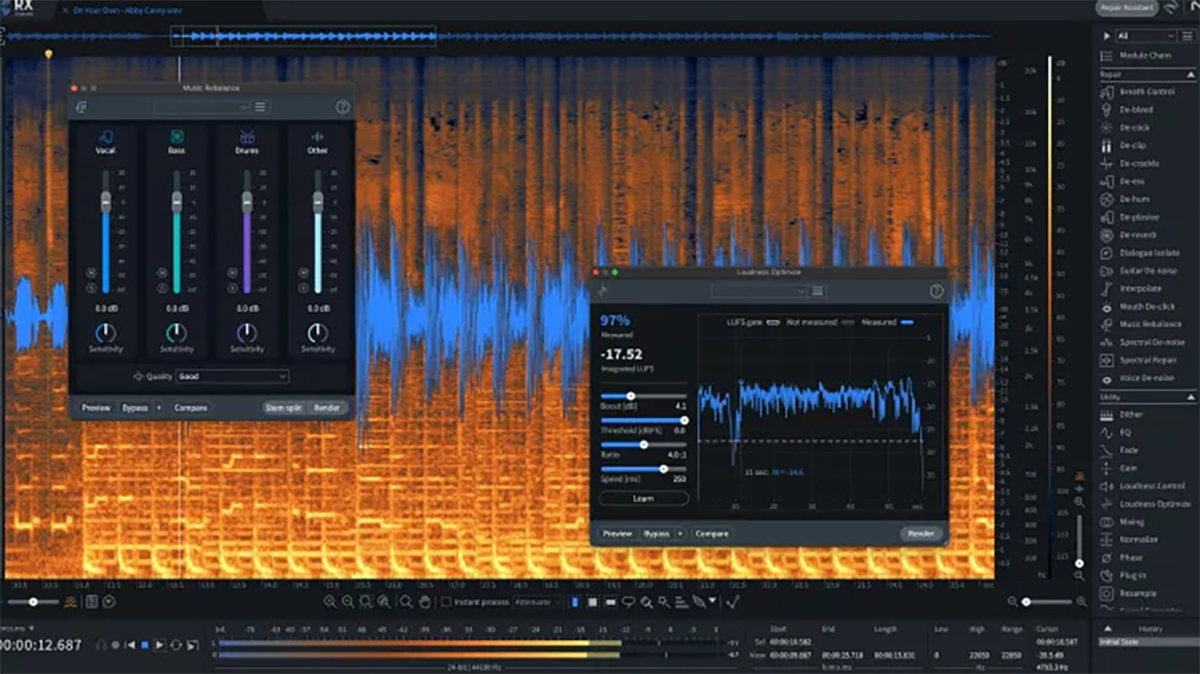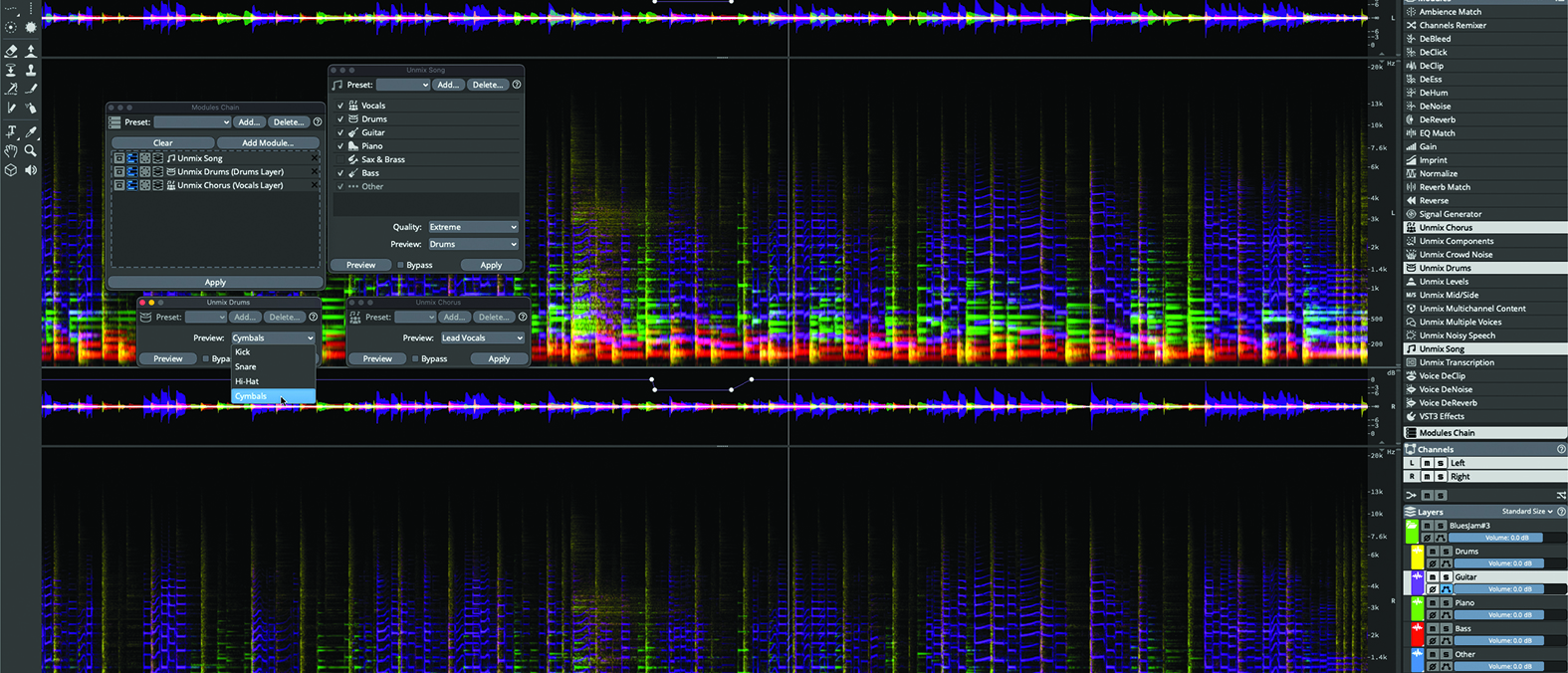MusicRadar Verdict
The combo of powerful, flexible, multi-layered spectral audio editing with cutting edge AI-based neural networks adds up to the best SpectraLayers edition yet.
Pros
- +
Astonishing unmixing/separation.
- +
Advanced AI that’s actually helpful.
- +
Big workflow improvements.
- +
Transfer Brush moves effortlessly.
- +
Audio layers concept is flexible, powerful and elegant.
- +
Competitively priced.
Cons
- -
New Transient Pencil tool may be of limited usefulness.
MusicRadar's got your back
Steinberg SpectraLayers Pro 11: What is it?
There are a handful of audio editors that can stray into spectral (that is, frequency-specific) territory – Steinberg WaveLab and Adobe Audition spring to mind. But if you wish to unlock the true potential – and, let’s face it, near magic – of this novel technology, there are only two shows in town: iZotope RX and Steinberg SpectraLayers.
We looked at the 11th edition of the former in an earlier issue, so now that Steinberg has turned its offering up to 11 too, we thought we’d best take a gander…

Peeling back the layers
Unlike a conventional waveform that shows only how signal amplitude changes over time, a spectrogram visualises both frequency and amplitude by using varying colour and/or brightness to represent amplitude of each frequency at each point in time. SpectraLayers takes this a step further by allowing its spectrogram to be morphed into quasi-3D with a moveable point-of-view, making it easier to read and understand your audio’s spectral makeup.
In line with other spectral editors, SpectraLayers’ tools for selecting time and frequency ranges within its spectrogram are strikingly similar to those found in image editors like Adobe Photoshop: rectangle, marquee, magic wand, etc. SpectraLayers takes the similarity further with the provision of audio layers, each able to be independently edited.
In essence, layers turn SpectraLayers into a multitrack spectral editor, with big advantages. Notably, audio selections and separated stems/parts/components can sit in their own layers where they can be further processed.
Steinberg SpectraLayers Pro 11: Performance and verdict
SpectraLayers’ all-new Module Toolbar, which lists all processing modules, provides a much improved workflow over the previous approach. It is somewhat RX-like (as is the new Home Screen), but the list can be filtered using preset Unmix, Utilities and Restoration groups. A nice touch here is that you can also define your own filters containing custom selections of modules.

• iZotope RX11 Standard
iZotope’s spectral editor contains tools and processors ideal for musicians and producers.
• Steinberg WaveLab Pro 12
Includes basic spectral editing tools and more.
Also smelling a bit RX-like is the Modules Chain, used for hosting and managing stacks of processing modules. What we particularly like here is that each module in a chain can target a specific layer and/or selection, and can even target layers that will be created by modules positioned earlier in the chain. Modules Chain also sits behind the new Batch Processing feature, defining the processing chain each file will be fed through.
Want all the hottest music and gear news, reviews, deals, features and more, direct to your inbox? Sign up here.
Voice DeClip will be a huge timesaver in film and TV production, where it’s common to be presented with hundreds of vocal takes, any number of which may contain the hard-to-repair crunch of a clipped recording. Voice DeClip’s AI can locate and repair such problems in moments: the sort of AI that’s welcome in our corner of the production world!
There are also a couple of useful new cursor tools. Transfer Brush is a huge time saver, capturing in a single mouse click the procedure of making a selection and cut-and-pasting it to a new layer. The Transient Pencil tool is a bit more specialised, its usefulness largely focussed on creative sound design, although it can help with repairing poor quality audio too.
Unmixing magic
Unmixing, that most impressive ability of spectral editors, relies on neural networks trained to recognise different voices and instruments within a mixed recording. Steinberg’s developers have taken a huge step forward in this area with improvements to the existing AI, and a clutch of new modules.
Unmix Song adds brass to its roster of recognised instruments alongside the existing vocals, drums, bass, guitars and piano. This is more that SpectraLayers’ main rival can recognise, and the accuracy is astonishing. Sure, you may get the occasional stray artefact turning up in the wrong place, but overall the results are clean and eminently useable.
Unmix Drums delivers improved results too, now recognising cymbals as distinct from hi-hats, and with improvements to its understanding of complex rhythms and simultaneous drum sounds. More impressively, you can now train Unmix Multiple Voices to recognise and separate each voice in a recording. Closely related is the new Unmix Chorus module, which separates lead and backing vocals, and Unmix Crowd Noise, ideal for refining and cleaning live recordings.
As ever, we’re mostly spotlighting the big-ticket items within this review, and there are a bunch of smaller changes and additions to SpectraLayers that add even more power to the platform, such as Mid/Side decoding and per-layer volume automation.
There is an undeniable convergence with main rival RX, but this is only skin-deep. SpectraLayers 11 retains its own character, and the AI-tech that underpins its most impressive unmixing and noise reduction/removal tricks delivers the best results we have yet heard.
MusicRadar verdict: The combo of powerful, flexible, multi-layered spectral audio editing with cutting edge AI-based neural networks adds up to the best SpectraLayers edition yet.
Steinberg SpectraLayers Pro 11: Hands-on demos
Steinberg
Folia Soundstudio
White Noise Studio
DarkWhite Productions
Steinberg SpectraLayers Pro 11: Specifications
- macOS 11 (Big Sur), macOS 12 (Monterey), macOS 13 (Ventura) or macOS 14 (Sonoma).
- Windows 10 (64-bit) or Windows 11 (64-bit).
- CONTACT: Steinberg




